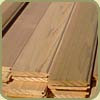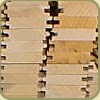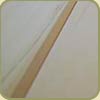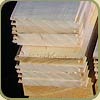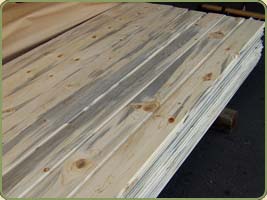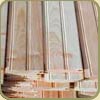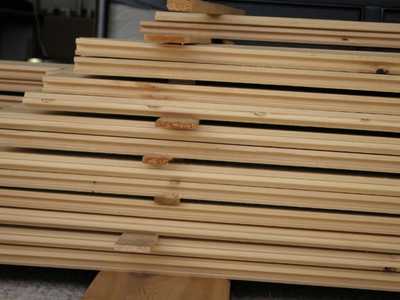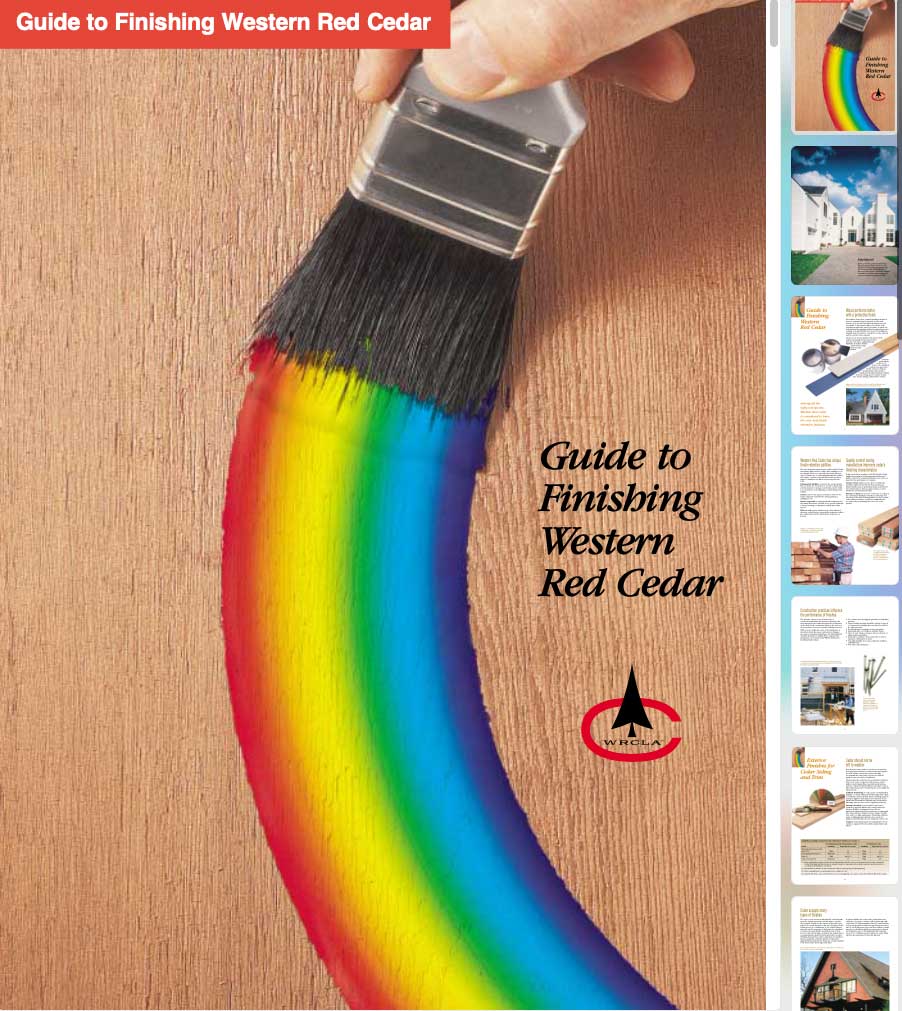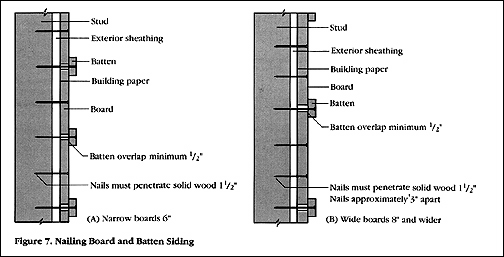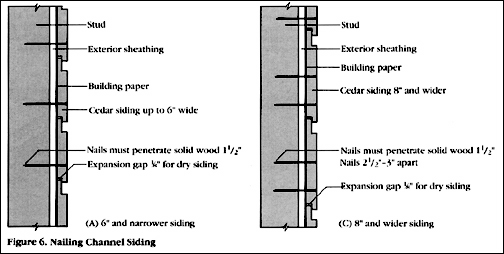
Tongue and Groove Siding
A tongue and groove siding pattern is a highly versatile, durable, and attractive option for exterior application (AND interior ceiling and paneling).
Tongue and Groove is a type of siding in which a projecting rib on the edge of one board fits into a groove in the edge of an adjacent board. Tongue and groove siding is unique in that it is reversible and gives you additional options for installation. It’s a great product for do-it-yourself projects. Common nominal dimensions are 1/2 x 4; 1 x 4 and 1 x 6.
T&G cedar wood siding is a builders dream. It can be installed on both the rough side and the smooth side, AND it can also be installed at an angle, vertically or horizontally. Tongue & Groove Patterns (T&G) have the greatest variation in profile – the outline or shape of the board. How distinct or shadowed the line between the boards appears after installation depends on the shape of the edge – the pattern profile you choose.
The most common widths for tongue and groove are 4″ and 6″, but we can also provide 8″, 10″ or 12″ widths. Both clear and knotty grades are available in the various widths and in either smooth or re sawn textures. The most common pattern for tongue and groove is to have a v-shaped joint, but we also can supply center match, nickel gap and other specialty joint patterns as well. Tongue and groove siding has a flat surface in contrast to a channel, shiplap, or bevel siding, which have overlaps on each piece.
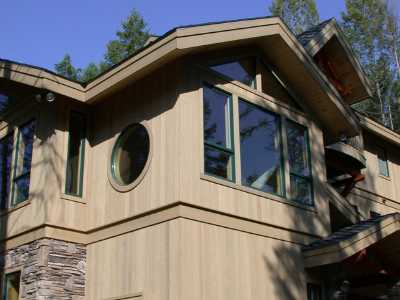
Western Red Cedar Siding In Application
A beautiful color tinted stain graces the surface of this cedar siding on a home in Montana. Many builders and homeowners love the durability of cedar along with its ability to absorb stain well. Depending on the stain you choose, the colors of the wood and change and enhance the overall style and design of your homes exterior appearance.
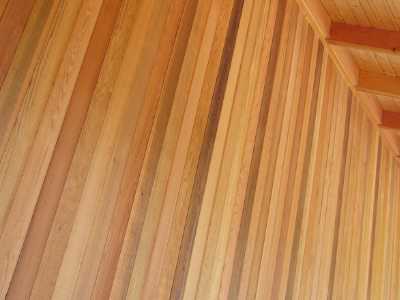
Western Red Cedar Siding In Application
A beautiful clear stain graces the surface of this cedar siding on a home in the North Cascades Mountains in Washington state. A clear stain on your cedar siding will extend the life of the siding and allow for a more consistent look as it ages. The siding on this home was further protected by being under a porch. There is less sun and moisture exposure overall which keeps the look closer to it's original installation.
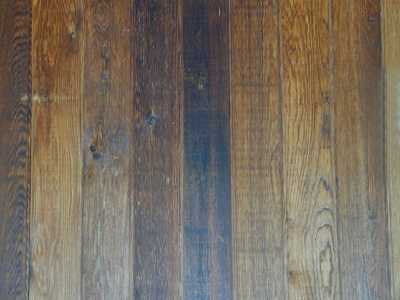
Western Red Cedar Siding In Application
This home in the North Cascades Mountains in Washington state has NOT had a stain applied to it. The homeowners were interested in a low maintenance option, and they live in a dry climate, so water damage wasn't the same concern as you would have in a wetter climate. The colors of the wood will naturally age and can stay light or get very dark over time. This siding was under cover and mostly just exposed to the sun.

Alaskan Yellow Cedar Siding In Application
Brightly colored yellow cedar siding is beautiful on the outside of this home in Washington State. A clear stain was applied, and it's also in a very dry climate. The colors should deepen over time and get more "buttery" overall.
Tongue and groove wood siding can be manufactured with a variety of patterns and used widely for exterior application. Most patterns are a variation of a basic tongue and groove and all are unique. All siding options are available in a variety of grades ranging from vertical grain clear to utility. Bear Creek Lumber can provide many different options for this siding with by adjusting size, grade or pattern. Click here for a Guide to Installing Tongue and Groove Siding.
Western Red Cedar Tongue and Groove Siding : Raw Lumber
Western Red Cedar It is one of the most common types of siding available owing to the unique color, texture, and durability of its wood. The soft red-brown timber has a tight, straight grain and few knots. It is valued for its distinct appearance, aroma, and its high natural resistance to decay, being extensively used for exterior siding.
Alaskan Yellow Cedar Tongue and Groove Siding : Raw Lumber
Alaskan yellow cedar wood paneling can be manufactured with a variety of patterns and used widely for interior application. Most patterns are a variation of a basic tongue and groove and all are unique.
Port Orford Cedar Tongue and Groove Siding : Raw Lumber
Wood paneling can be manufactured with a variety of patterns and used widely for interior application. Most patterns are a variation of a basic tongue and groove and all are unique.
Ponderosa Pine Tongue And Groove Siding : Raw Lumber
Wood paneling can be manufactured with a variety of patterns and used widely for interior application. Most patterns are a variation of a basic tongue and groove and all are unique.
Douglas Fir / Larch Tongue and Groove : Raw Lumber
A mixture of Douglas Fir and Western Larch sold as either individual species or as one species grouping. The two species are intermixed because they have similar characteristics and are used in similar ways. This species combination has the highest modulus of elasticity (MOE or E) value (the stiffness factor) of all North American softwoods. In strength properties, DF-L has the highest ratings of any Western softwood for fiber stress in bending, tension parallel to grain, horizontal shear, compression perpendicular and compression parallel to grain. Douglas fir tongue and groove lumber can be manufactured with a variety of patterns and used widely for interior and sometimes exterior application. Most patterns are a variation of a basic tongue and groove and all are unique.
Now if you are wondering what “tongue and groove” means, it is a method of fitting boards together. The tongue joint is a bit of extended wood that can be slotted into an opening in another block of wood (or similar material)- this opening is called the groove. The edges are then perfectly slotted together to produce a flat and smooth surface.
Tongue and Groove Coverage estimator
| Nominal Width | Net Width | Pattern Face | Sq Ft To Lineal Feet | Sq Ft To Board Feet |
|---|---|---|---|---|
| 3 | 2-1/2 | 2 | 6 | 1.5 |
| 4 | 3 - 1/2 | 3 | 4 | 1.33 |
| 6 | 5-1/2 | 5 | 2.4 | 1.2 |
| 8 | 7-1/4 | 6-3/4 | 1.77 | 1.19 |


